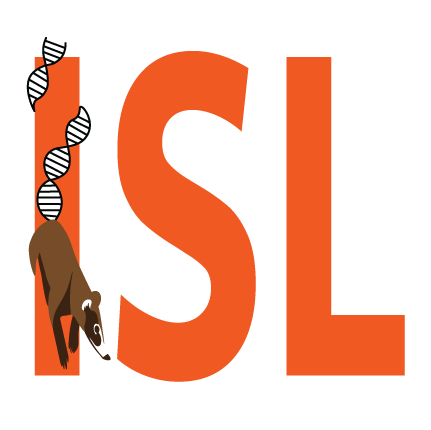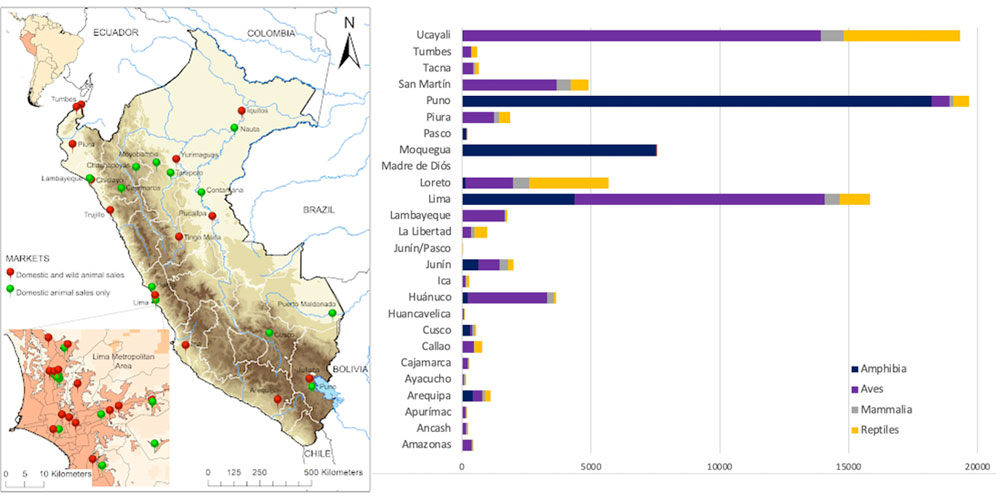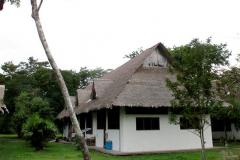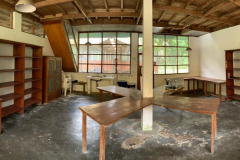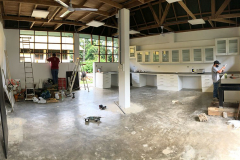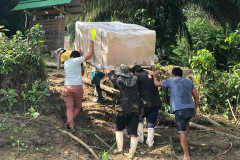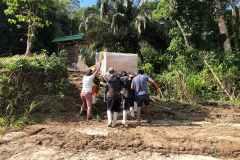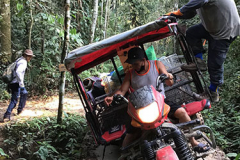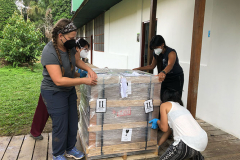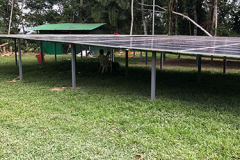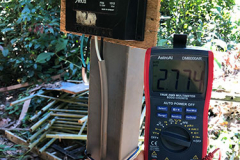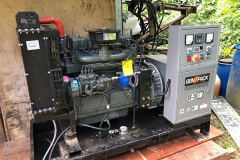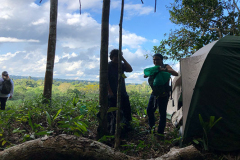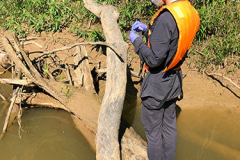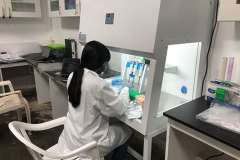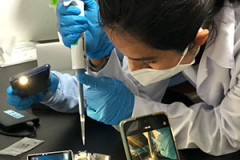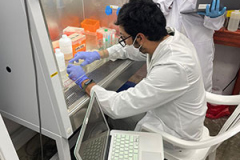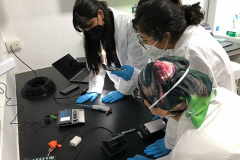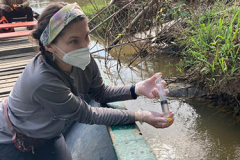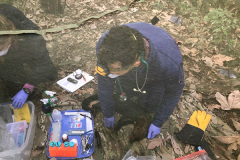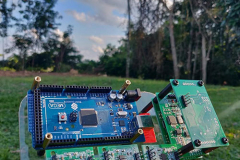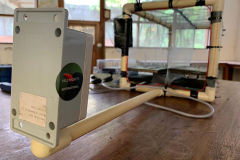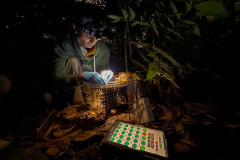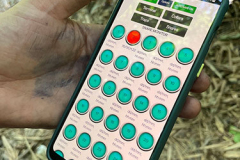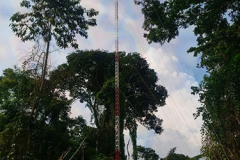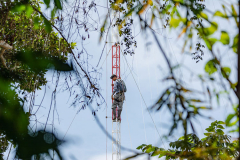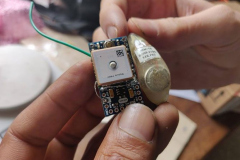ISL Peru
Los Amigos Wildlife Conservation Laboratory
The lowland forests of the Madre de Dios Department of Peru boast an extraordinary biodiversity that faces immediate and urgent threats, which encouraged us to select it as the flagship location for launching the ISL initiative. Despite Peru’s nearly unrivaled fauna and natural resources, like many other biodiverse nations, it is under threat of over-exploitation – along the coast, in the mountains, and in the Amazon itself. Peru has an expanding human-animal interface that is largely unmonitored, and its scientific research and training resources are disproportionately skewed towards Lima, the capital city. Until the creation of this initiative, the Madre de Dios Department had no dedicated space with molecular instruments for conservation or wildlife disease screening applications, and the capacity of local scientists to utilize modern molecular tools is understandably lagging. However, this does not reflect a lack of interest in this field; on the contrary, there is strong enthusiasm from a range of public and private stakeholders for routine wildlife monitoring. However, the noted gaps in accessibility of resources continue to grow without focused action to improve access to research tools and stakeholder cooperation. Thus in Peru, the ISL aims to (1) shrink connections between funders, field teams, and labs; (2) create toolkits and resources that local partners own and apply; (3) broaden surveillance targets; and (4) reduce dependency on external research laboratories.
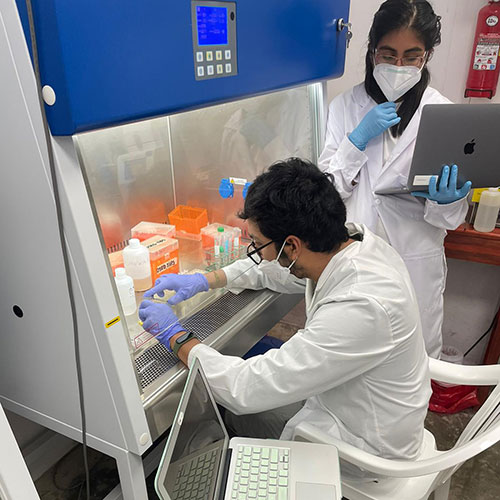
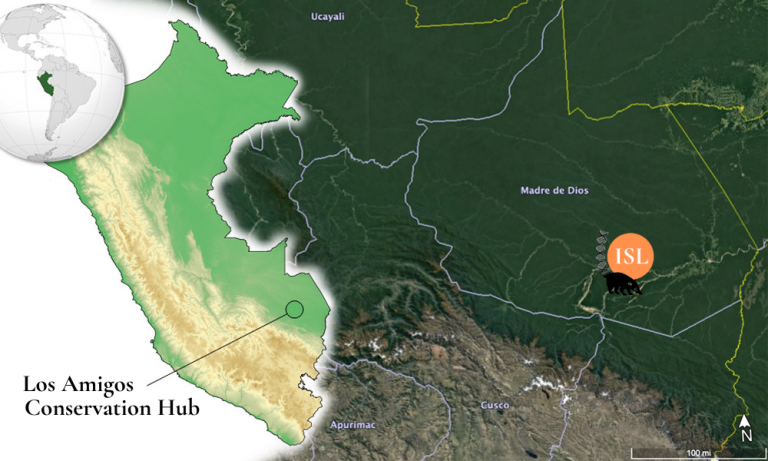
This information consists of a subset online resources, links to potential partners and stakeholders, and topics of interest that were incorporated during our planning phase.
Peru is located on the western coast of South America and shares borders with Ecuador, Colombia, Brazil, Bolivia, and Chile. Bisecting the country is the Andes mountain range, which contains 85 of the 110 climatic zones on the planet including deserts, mangroves, montane grasslands, cloud and lowland tropical rainforest. Between 2001 and 2021, according to the Global Forest Watch, Peru lost 3.62 million hectares of tree cover; this equals about a 4.6% decrease in tree cover nationally as well as an added 2.33 gigatons of CO2 emissions. Despite these losses, Peru is still considered perhaps the most biologically diverse country in the world, hosting > 50 non-human primate species, approaching 2000 documented bird species, and over 600 amphibians. By comparison, the USA and Canada combined (several fold larger than Peru) have approximately half the number of amphibian and bird species, and no naturally occurring non-human primates (3).
PROTECTED AREAS
The Peruvian Service for Protected Natural Areas (SERNANP) is the national institution in charge of land protection for biodiversity conservation, but many natural areas are under the protection of regional and local governments.
|
Protected Area Categories |
Number of Areas |
Hectares |
|
National |
92 |
25,095,524.65 |
|
Regional |
32 |
3,599,519.77 |
|
Private |
162 |
400,166.38 |
|
Municipal |
70 |
– |
|
Total |
356 |
* 29,095,210.8 |
|
% of surface of Peru |
– |
22.64% |
Although Peru’s National Parks System has not implemented a nationwide program for epidemiological surveillance, systematic monitoring of wildlife die-offs, or tracking of general wildlife population trends, multiple small scale and targeted efforts do exist. Examples include a national strategy for the management of vicuña by SERFOR, marine life stranding monitoring system by IMARPE, regional jaguar initiatives by WWF and SDZWA, and Proyecto Huangana by CORBIDI.
PREDOMINANT WILDLIFE INTERFACES
Tourism
Although tourist attractions (1) provide visitors with opportunities for close interactions with non-domesticated, free-ranging wildlife outside of captive environments, and (2) have the potential to garner significant economic benefits and positive impacts on wildlife populations, negative net impacts on wildlife often result from (a) disrupted feeding or breeding behaviors, (b) unintentional animal deaths following inappropriate handling, and (c) spillover of human pathogens among other unfortunate outcomes of close human-wildlife interaction. This interface is almost entirely undocumented.
Wildlife Trafficking
(Left) Map indicating main wildlife sale locations in Peru and (RIGHT) Live vertebrates confiscated in Peruvian regions, 2001-2019.
Wildlife in Captivity
Estimated animal surplus at Peruvian captive facilities by mid-2019

KEY RESOURCES & SURVEILLANCE EFFORTS
National Reference Laboratories & Services / Research & Academic Laboratories / Private Laboratory Services / International Coalitions for Wildlife Pathogen Surveillance
GOVERNMENT STAKEHOLDERS
– Ministry of Agriculture and Irrigation of Peru / SERFOR / Ministry of Environment / DGB – Ministry of Environment / General Directorate of Biological Diversity / SERNANP / OSINFOR / PNP – Ministry of the Interior / Environmental Direction of the National Police of Peru / FEMA – Prosecutor’s office for Environmental Issues / SENASA / CDC PERU / DIGESA > DESA – Ministry of Health / General Directorate of Environmental Health > Executive Directorate of Environmental Health
NON-GOVERNMENTAL STAKEHOLDERS
ConservAccion / Programa Punta San Juan / The Disease Ecology and Conservation Medicine Program of CORBIDI / Neotropical Parasitology Research Network (NEOPARNET) / The Lake Titicaca Frog Conservation Project / BioS, or the Research Center of Biodiversity & Sustainability / Microplastic Fauna Peru Project / Streicker Lab. Research pathogen transmission between species / ImpactANT. Research in anthropogenic impacts in natural systems / COMFauna. Comunidad de Manejo de Fauna Silvestre en la Amazonía y en Latinoamérica / The Emergent diseases and Climate Change (EMERGE) Research Unit, Public Health School (FASPA) – UPCH / Marzal Lab – Peru project /
Wildlife Conservation Laboratory
Estacion Biologica Los Amigos, in the Madre de Dios Department, Peru (see in Google Maps)
Peru became the first formal hub of the ISL in 2020. Site renovation and Installation took place from September 2020 through August 2021. An existing building was converted into a multipurpose facility for modern wildlife biosurveillance activities. The space now possesses a training room, technology ‘makerspace’, bait and prep room, multipurpose room, sample storage and sterilization room, and a BSL-II molecular laboratory. The molecular laboratory is further separated into dedicated rooms for sample intake and storage, sample prep and nucleic acid extractions, a DNA-free work area, and a general space for PCR, sequencing, etc. The entire WCL receives reliable energy from a solar energy system, with a backup generator in case of prolonged cloud cover.
Pilot work in Peru has provided essential proof of concept data for expansion of the ISL initiative to elsewhere in the world. Initial uses of the WCL focused on…
Creating systems for supporting routine, large-scale wildlife monitoring: The hubs work now involves annual, on-site sampling from major wildlife taxa bats, birds, monkeys, small terrestrial/arboreal animals, and medium-sized mammals (in total ~1000 animals). Each handling event, produces 5-6 sample types. A subset are used for immediate on-site genetic and mercury analysis.
Exploring low-cost conservation technologies: Intention is to improve wildlife tracking options and mitigate negative outcomes from wildlife sampling. Specifically, we are developing a local LoRa network that sends and receives information to/from a range of devices deployed in the forest (RFID readers, collars, trap sensors, etc).
Establishing recurring surveillance training programs: At the heart of our training efforts is to share skills and techniques for applied genetics for conservation and disease surveillance studies.
no images were found
Update in progress
Points of Contact
Mrinalini Watsa, Ph.D. (merkenswickwatsa[at]sdzwa.org)
Scientist, San Diego Zoo Wildlife Alliance
Gideon Erkenswick, Ph.D.(gideon[at]fieldprojects.org)
Director, Field Projects International
Caroline Moore, PhD DVM(camoore[at]sdzwa.org)
Scientist, San Diego Zoo Wildlife Alliance
Lucia Castro Vergara
Coordinator, Conservacion Amazonica- ACCA
Jhakelin Reyes & Gabriella Caceres
Laboratory Managers, Conservacion Amazonica- ACCA
